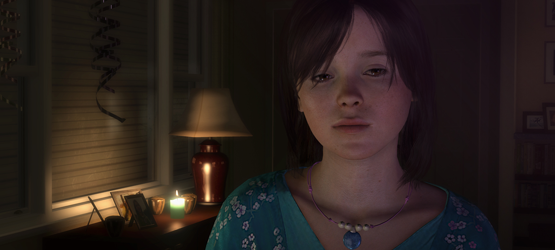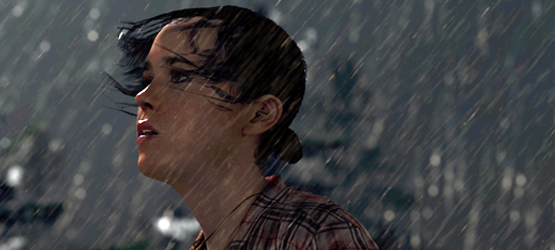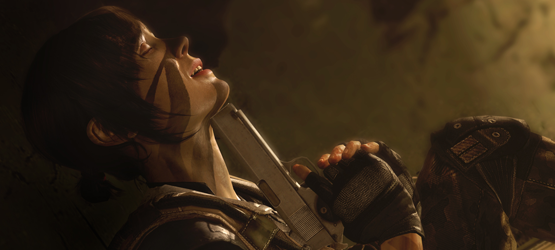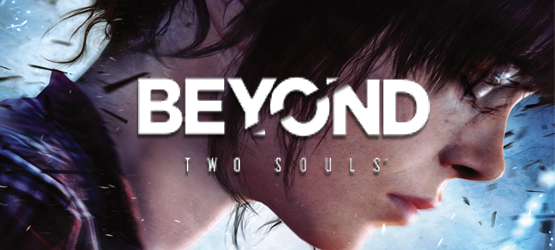Quantic Dream, the studio behind the critically acclaimed Heavy Rain, is back with Beyond: Two Souls, a game that not only looks to build upon the complex methods of story telling the developers have become known for, but also to explore depths of human nature rarely seen in video games.
Beyond: Two Souls is, by all definitions, one of the most complex titles I have ever had the pleasure to review, as it a combination of frustration and beauty that is both easy to love and hate. Being that the story and character arcs are entwined into the experience, I will not spoil any major plot points or experiences, but be warned, it would be a travesty to review something like this without lightly touching upon parts of the story and design decisions.
Visually, the strongest aspect of Beyond is noticeably the character models and the facial animations that are able to convey a great deal of emotion and body language. This allows the story to be driven not only by speech and text, but subtle gestures that give each character a wider depth than we have ever seen in games industry. Sadly, the detailed character models are only a signifier of the contrast between them and the environment, as the world around them is not able to match up to the same attention to detail. That being said, the atmosphere and diversity of each of the game’s many settings does do a great job of keeping the attention on to the characters and the situation at hand than the polygon count of some of the background objects.

Each segment of the game is broken into a fragment of time that jumps around covering a significant moment that occurs to tell the story. Sometimes the tail end of a situation will play out before the start, setting up the story before the introduction, which works well for the story, but does take away the power of making decisions – as major aspects of the story have already been set in stone.
Being a Quantic Dream title, decisions are going to be a driving factor for the way the story unfolds, but getting through that story will be an issue depending on the game’s unique control mechanics. As an avid gamer with a broad history of gaming, it is rare for me to find a game that gives me any issues, but Beyond was absolutely one of those. The simple act of walking to specific areas was a challenge during certain events, as Beyond uses a great deal of forced camera positions to keep the player in line. Whether this is caused by the style of cinematography and animation used to bring the story and characters to life, or just a design decision, it is unclear. But, the end result is a an issue where Beyond feels incredibly linear, destroying a great deal of the weight of choices, as your hand seems more forced than free during some levels.
This leads me into my biggest issue with Beyond, the combat, which basically breaks into a number of quick time events that require you to push the right analog stick in a specific direction. Playing through the game normally, the only indication you get is the beginning of a gesture, that you need to guess the character’s intention as things slow down. This is at times obvious, while at other times reliant on little more than luck, as you need to adapt to the ever changing camera angle and figure out if you are blocking, dodging or attacking.

Thankfully, this issue can be completely fixed if you don’t mind simplifying your experience. By using the ability to play the game from beginning to end with an app on your phone or tablet, you can get past even the most difficult aspects of the game without issue. Once you install Beyond Touch, it is only a matter of pushing a few buttons to connect and you are able to move along location markers as well as get clear directions to assist with combat. If you do not have the ability to use an app, you can get a similar experience by simply playing on an easier mode.
This brings me to the story, and if even the smallest spoilers are a big concern for you in this department, stop reading and just go buy Beyond, as this is an area where it cannot be beat.
The story of Beyond: Two Souls revolves around the life of Jodie Holmes, a girl who has been linked to a mysterious supernatural entity named Aiden. Covering a great deal of Jodie’s life, Beyond sets the bar for giving life to a virtual character, looking past the phenomenal character models and voice work, the story that unfolded had captivated me into not only making decisions I thought were good for the story, but also for Jodie as a person. It wasn’t until I finished the game that I realized that, even though I only was able to spend around 10 hours with Beyond, the concepts that were raised and concluded in the game stayed with me for much longer.

Unlike Quantic Dream’s previous title, Beyond finds a way of setting a pace and keeping it moving even during mundane segments that only focus on character development. As the story pushes through various themes, you are able to see a profound character arc for Jodie, as well as Aiden, who you are able to make decisions for as well.
The supernatural tone that becomes an overarching part of the story is something that could have taken Beyond well out of the ability for it to be believable, but between the excellent acting and the script writing, it completely sells the story. Among all of the talented actors and motion capture artists, Ellen Page does a superb job of not only personifying a person going through various aspects of life, but also giving one to an apparition. Aiden is rarely ever more than a blue/purple light, but he becomes a cast member that is simply sold by his random interactions and the cast’s ability to bring him to life.
Beyond is not a perfect game. It has control flaws that are glaring and some mundane issues like pop-in that will bother a number of gamers, but if you are looking for something with enough heart and passion to tell a truly great story in a unique and exciting way, Beyond: Two Souls is a must have.
-
Phenomenal Story.
-
Groundbreaking facial animation and modeling.
-
Stunning cinematography.
-
Great character development.
-
Good action sequences.
-
Perfect voice work and sound.
-
Controls can be frustrating or overly simple.
-
Random moments of pop-in.
-
Load time.




